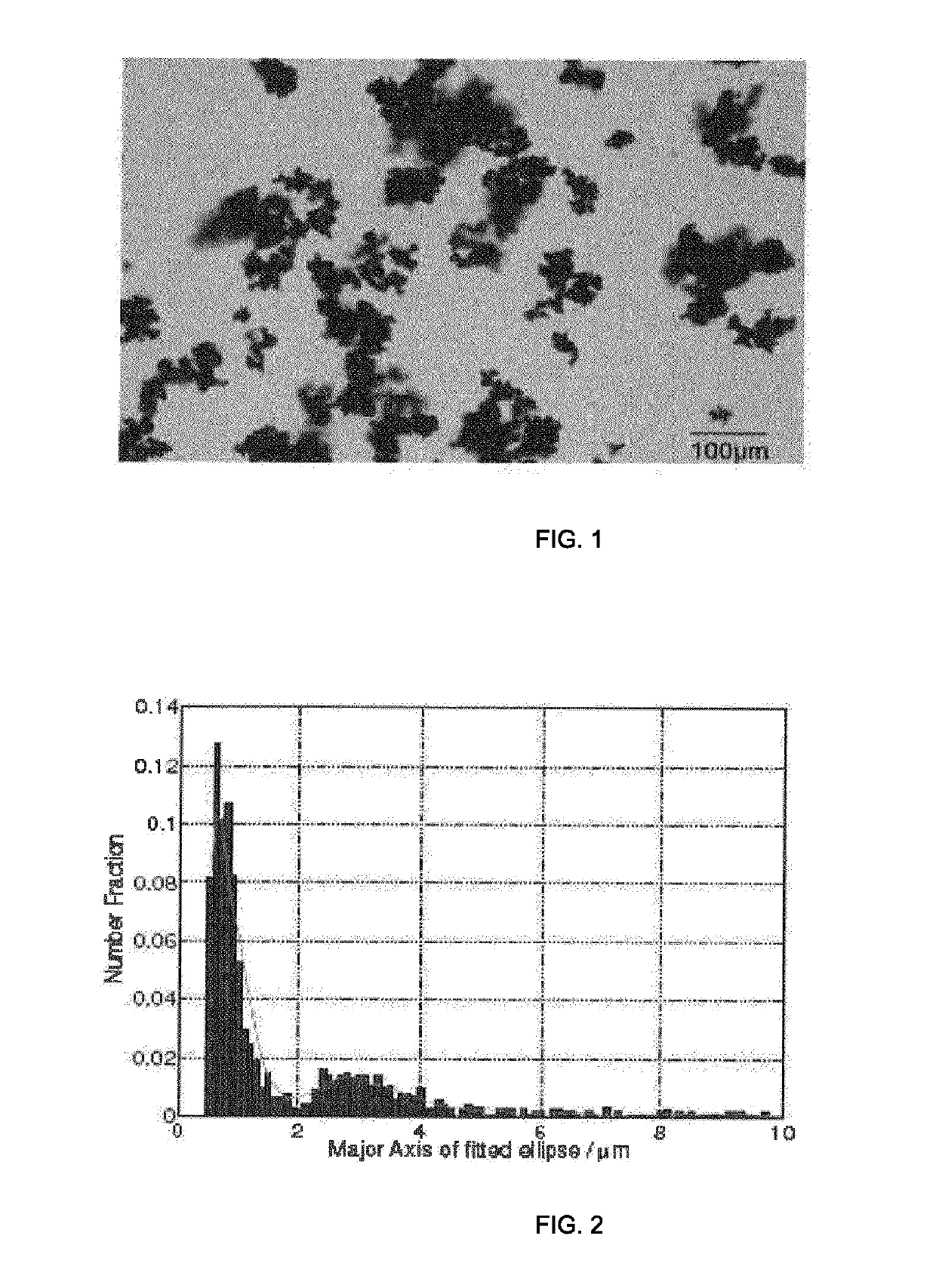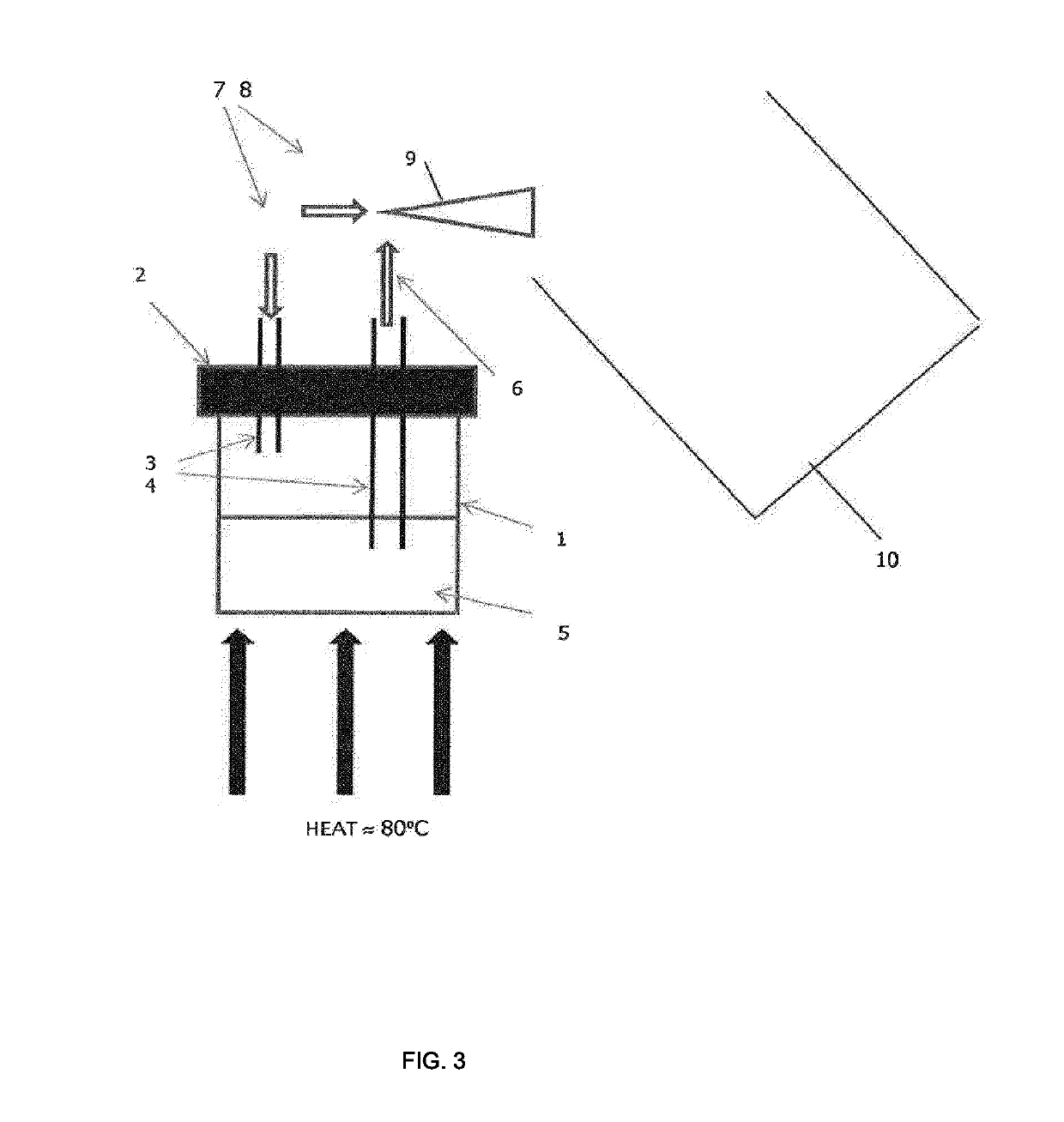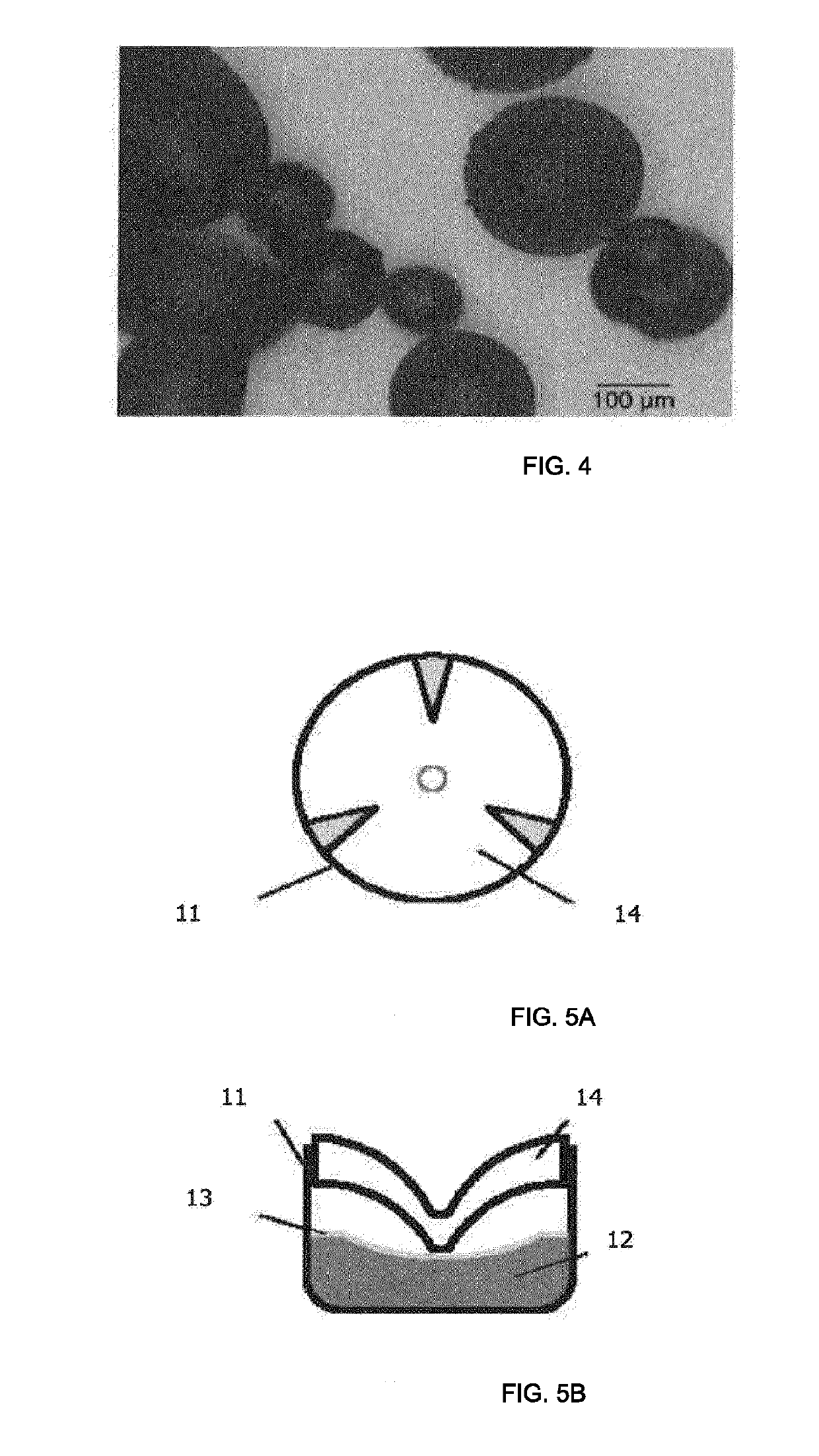Explosive composition for use in telescopically expanding non-lethal training ammunition
a technology of explosive composition and telescopic expansion, which is applied in the direction of non-explosive desensitiser/phlegmatiser, ammunition, weapons, etc., can solve the problems of jammed rounds, toxic and energy-intensive impact explosives commonly available in conventional ammunition primers. achieve the effect of reducing the aggressiveness of telescopic expansion, reliable cycling of the host gun, and consistent propulsion speed
- Summary
- Abstract
- Description
- Claims
- Application Information
AI Technical Summary
Benefits of technology
Problems solved by technology
Method used
Image
Examples
example 1
Synthesis
[0053]A solution of sodium nitrite (1.68 g) and dextrin (6 mg) in distilled water (40 ml) was heated to 50-55 C.° with stirring. Tetrazene was synthesised by slow addition (control flow rate of 0.15 ml / min) of an acidified solution (pH control to 2.2 with nitric acid) of aminoguanidine Hemisulfate (6.28 g) in distilled water (80 ml) to the sodium nitrite solution, with stirring. At this scale, the process time was 4 to 6 hours. A precipitate of tetrazene formed, which was filtered, washed with distilled water, with a final rinse of alcohol, and oven dried at 50° C. for 8 hours to afford tetrazene crystals. The product was confirmed as tetrazene by single crystal X-ray diffraction. The synthesised crystals were small (approximately 1 μm diameter), and agglomerated readily. A microscope image of the synthesised tetrazene crystals is shown in FIG. 1, while FIG. 2 shows the approximate particle size distribution of the synthesised tetrazene crystals.
example 2
on of Paraffin Wax Micro Particles
[0054]Paraffin wax micro particles were prepared by spray-cooling of molten paraffin wax (melting point ˜65° C.). The paraffin wax used in these experiments was supplied by Sigma Aldrich as 20×10×5 cm bricks with a melting point of 53-57° C.
[0055]The equipment used for preparing the paraffin wax micro particles is shown in FIG. 3. The paraffin wax bricks are placed into a small glass beaker (1) sealed with a sealing lid (2) with two tubes (3, 4) in the lid, one of which (4) reaches into the wax. The beaker is heated to around 80° C. Once the wax has melted to form liquid paraffin wax (5), air jet (7) is forced into the beaker through tube (3), this in turn forces out a jet of liquid paraffin wax (6) through tube (4). The jet of hot liquid paraffin is disrupted sideways with another air jet (8) resulting in small particles of paraffin wax condensing in the air. The small particles of wax spray (9) are caught in a large glass beaker (10). The obtained...
example 3
on and Packaging of the Composition
[0057]The tetrazene crystals (300 mg) as prepared in Example 1 and the paraffin wax micro particles (7.92 mg—equivalent to 5% wax by void less volume) as prepared in Example 2 were weighed out, and combined in a powder mixer. The resulting TW5 composition was packaged as a percussion primer for measurement. A plan view of the packaged TW5 composition is shown in FIG. 5A and a section view of the packaged TW5 composition is shown in FIG. 5B. A controlled quantity of the TW5 composition was weighed out, and pressed into a nickel-plated brass primer cup (11) to form the charge (11). A paper foil (13) was placed on top of the mixture, and the cup was sealed with a brass anvil (14). The anvil provides a crush-point for reliable ignition of the mixture.
PUM
| Property | Measurement | Unit |
|---|---|---|
| diameter | aaaaa | aaaaa |
| diameter | aaaaa | aaaaa |
| peak mean pressure | aaaaa | aaaaa |
Abstract
Description
Claims
Application Information
 Login to View More
Login to View More - R&D
- Intellectual Property
- Life Sciences
- Materials
- Tech Scout
- Unparalleled Data Quality
- Higher Quality Content
- 60% Fewer Hallucinations
Browse by: Latest US Patents, China's latest patents, Technical Efficacy Thesaurus, Application Domain, Technology Topic, Popular Technical Reports.
© 2025 PatSnap. All rights reserved.Legal|Privacy policy|Modern Slavery Act Transparency Statement|Sitemap|About US| Contact US: help@patsnap.com



